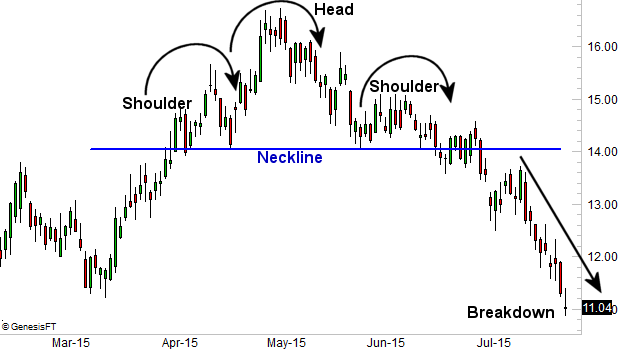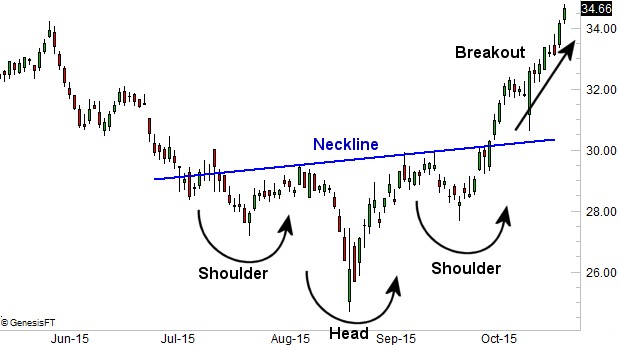Head & Shoulders Pattern In Technical Analysis Charting

Technical Analysis: Head & Shoulders Pattern
The head & shoulders pattern occasionally found on some stock and index charts can and often does suggest a trade-worthy move is underway. They can be bearish as well as bullish, and have a strong success rate compared to some other technical analysis tools.
A head & shoulders signal is called such due to its basic shape; it (loosely) looks like a head, with a shoulder on each side of it. More descriptively, a head & shoulders pattern looks like a large mountain with a smaller mountain on each side of it... for a bearish signal anyway. In the case of a bullish head and shoulders setup, the we see a two troughs with a deeper trough in the middle of them.
Examples will best illustrate what traders should be looking for in their hunt for head & shoulders setups.
On the chart of Nabors Industries (NBR) below, two smaller peak serve as bookends to a bigger one. In this case the base of all three peaks is a horizontal line, though bear in mind the neckline can be ascending or descending. Regardless of the slope (or lack thereof) of a neckline, once the second shoulders moves decidedly below the neckline, a trade-worthy pullback typically follows.
The head and shoulders patterns works in reverse, too. That is, when it's upside down and the second shoulder breaks above the neckline, it usually results in a strong, bullish breakout. The chart of Intel (INTC ) below illustrates how the pattern can just as easily lead to a bullish thrust.
The success rate of the head and shoulders set is impressive, though even in just the two examples above, one thing becomes clear - there is no ideal, typical, or perfect head and shoulders pattern. Sometimes the peaks and troughs are rounded, and other times their pointed. Sometimes they're crystal clear, and sometimes they're fuzzy. Sometimes they materialize very quickly, and sometimes they can take a while. And, though the examples above were daily charts, the pattern can be telling in shorter and longer-term timeframes.
Though it's not a hard and fast rule either, in general, the break past the neckline - the one being traded - usually spans the same distance between the neckline and the tip of the head. This can help in setting targets after a head and shoulders signal has been made.

